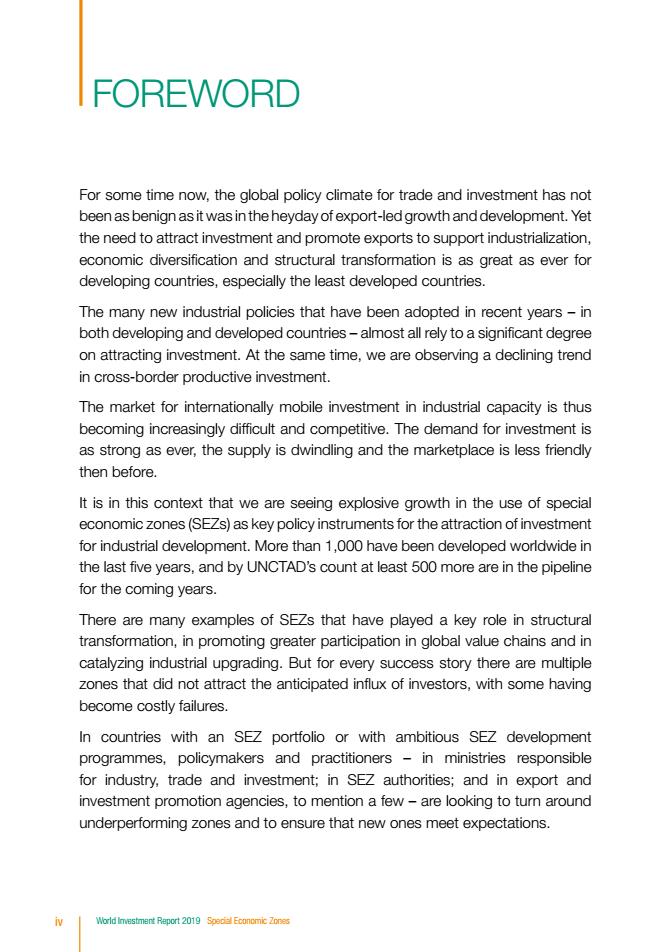正在加载图片...

FOREWORD For some time now,the global policy climate for trade and investment has not been as benign as it was in the heyday of export-led growth and development.Yet the need to attract investment and promote exports to support industrialization, economic diversification and structural transformation is as great as ever for developing countries,especially the least developed countries The many new industrial policies that have been adopted in recent years-in both developing and developed countries-almost all rely to a significant degree on attracting investment.At the same time,we are observing a declining trend in cross-border productive investment. The market for internationally mobile investment in industrial capacity is thus becoming increasingly difficult and competitive.The demand for investment is as strong as ever,the supply is dwindling and the marketplace is less friendly then before. It is in this context that we are seeing explosive growth in the use of special economic zones(SEZs)as key policy instruments for the attraction of investment for industrial development.More than 1,000 have been developed worldwide in the last five years,and by UNCTAD's count at least 500 more are in the pipeline for the coming years. There are many examples of SEZs that have played a key role in structural transformation,in promoting greater participation in global value chains and in catalyzing industrial upgrading.But for every success story there are multiple zones that did not attract the anticipated influx of investors,with some having become costly failures. In countries with an SEZ portfolio or with ambitious SEZ development programmes,policymakers and practitioners -in ministries responsible for industry,trade and investment;in SEZ authorities;and in export and investment promotion agencies,to mention a few-are looking to turn around underperforming zones and to ensure that new ones meet expectations. iv World lmvestmnt Report019m For some time now, the global policy climate for trade and investment has not been as benign as it was in the heyday of export-led growth and development. Yet the need to attract investment and promote exports to support industrialization, economic diversification and structural transformation is as great as ever for developing countries, especially the least developed countries. The many new industrial policies that have been adopted in recent years – in both developing and developed countries – almost all rely to a significant degree on attracting investment. At the same time, we are observing a declining trend in cross-border productive investment. The market for internationally mobile investment in industrial capacity is thus becoming increasingly difficult and competitive. The demand for investment is as strong as ever, the supply is dwindling and the marketplace is less friendly then before. It is in this context that we are seeing explosive growth in the use of special economic zones (SEZs) as key policy instruments for the attraction of investment for industrial development. More than 1,000 have been developed worldwide in the last five years, and by UNCTAD’s count at least 500 more are in the pipeline for the coming years. There are many examples of SEZs that have played a key role in structural transformation, in promoting greater participation in global value chains and in catalyzing industrial upgrading. But for every success story there are multiple zones that did not attract the anticipated influx of investors, with some having become costly failures. In countries with an SEZ portfolio or with ambitious SEZ development programmes, policymakers and practitioners – in ministries responsible for industry, trade and investment; in SEZ authorities; and in export and investment promotion agencies, to mention a few – are looking to turn around underperforming zones and to ensure that new ones meet expectations. FOREWORD iv World Investment Report 2019 Special Economic Zones